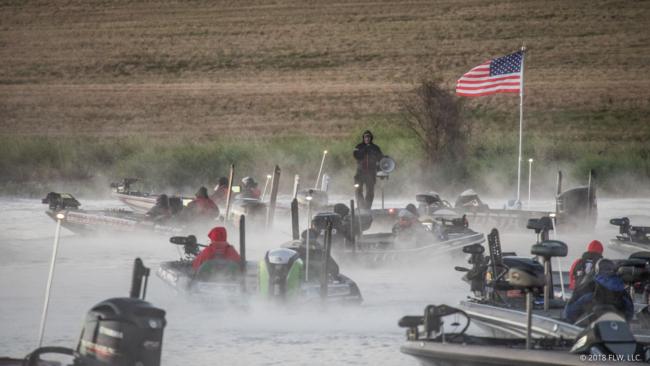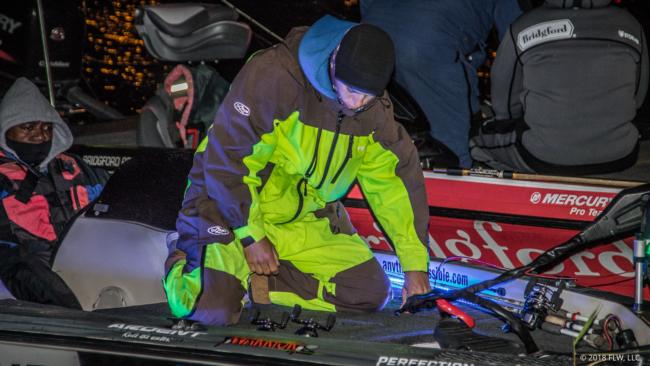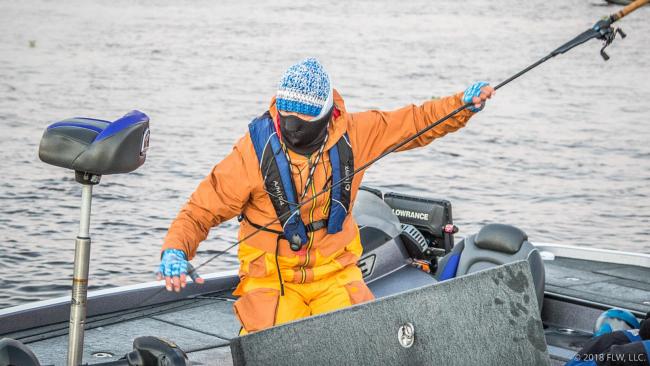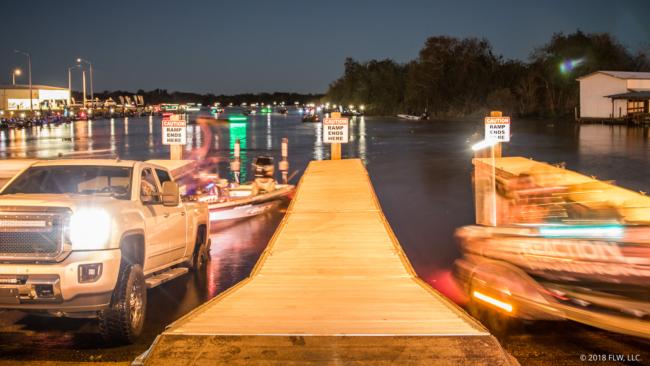Welcome to the “Small O”
Changes in vegetation, chilly conditions have created a new Okeechobee
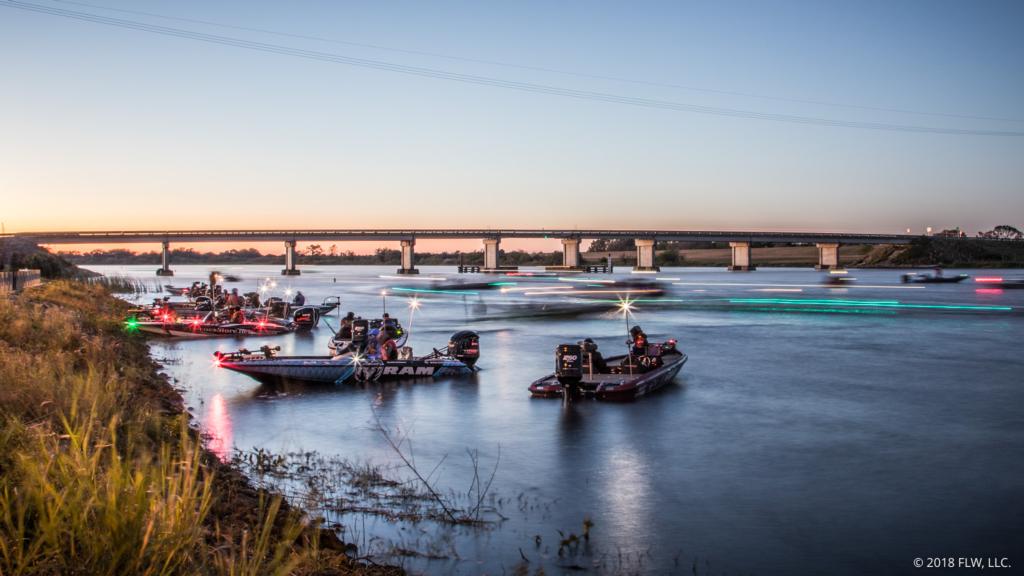
The first event of the Costa FLW Series Southeastern Division kicked off this morning on Lake Okeechobee out of C. Scott Driver Park. The event, which is presented by Power-Pole and hosted by the Okeechobee County Tourism Development Council, features a jam-packed field of 250 pros and co-anglers.
Competitors will likely get to see a lot of each other as Lake Okeechobee’s vast fields of vegetation have been reduced by high, turbid water and wind. In addition, south Florida’s first serious cold front of the season has just landed, leaving behind near-freezing conditions and howling north winds. Now the “Big O” has become a much smaller O as boats crowd into fewer places offering clean, stable water.
About the fishery
At about 730 square miles, Lake Okeechobee is the eighth largest lake in the United States. The lake is a world-famous dream destination for catching both numbers and size of Florida-strain largemouth bass from thick vegetation in shallow water. Winter is the most popular time to fish Okeechobee due to the temperate weather and the sheer number of bass that infiltrate the lake’s weedy areas to spawn.
Though well-known areas such as the Monkey Box, North Shore, the Shoal and South Bay always produce, the amount of vegetation and water level can be drastically different year to year, making Okeechobee appear “unrecognizable” from one season to the next. Okeechobee’s vegetation growth can explode or erode so fast that many anglers who have been to the Big O multiple times can recall returning to previous productive waypoints that were located in thick reeds only to find the old hot spots “out in the middle of the lake.”
Current conditions
Okeechobee is still feeling the aftereffects of a very active hurricane season in Florida last summer. High water and wind take their toll on Okeechobee by beating back vegetation and limiting its growth with turbid water. As a result, anglers are going to find a rather bare Okeechobee this time around when compared to previous years. In addition, a severe cold front has just passed through Florida, dropping the water temperature some 15 degrees in two days.
Tactics in play
Normally, Okeechobee is amenable to just about any kind of soft plastic anglers want to throw in the grass. But this year is going to be a bit different. The flipping and pitching crowd is probably going to be just that – a crowd, packed into small areas due to the limited amount of matted vegetation. And the casters and winders will be making circles in little areas of clear water as opposed to fishing huge, expansive flats of new water. The X factor could be Okeechobee’s more stable canals and rivers that don’t receive as much pressure as the main lake.
Critical factors
– A wave of fish that recently moved in to spawn will likely still be around protecting beds, so some big catches are still to be expected today. But the “replenishing” factor will be degraded significantly due to the front, and Friday and Saturday could be a lot stingier.
– High north winds are likely to take away some sections of clear water in the south end, thereby making the lake fish even smaller.
Dock talk
Well-known Lake Okeechobee local Brandon McMillan wishes he had better news for the 250-boat field in terms of Okeechobee’s fabled fishing.
“I’m afraid it’s not going to be pretty,” McMillan says. “It’s not going to be that nice, warm Okeechobee where everybody is in shorts and setting the hook every 10 minutes like we’ve seen here before.
“The lake is still pretty beat up from the high water this year,” he continues. “The water was over 17 feet this summer [currently it’s at 15.44 feet]. When they pump that muddy water into the lake, it smothers the vegetation. Then the wind beats the hard lines down, and muddy water creeps farther and farther back. Now with this front blowing 20 mph out of the North, it’s pushing mud into what clear water we had left down south. There are currently only a handful of places left on the lake with any fishable water clarity.”
Okeechobee’s own Scott Martin believes the weights needed each day to take the top spot will be in the 16- to 18-pound range.
“The best way to describe this lake right now is ‘fragile,’” Martin says. “Normally the clear water is locked in by thick hard lines of vegetation that keep even high winds from blowing the water around. But now we’ve lost a lot of those critical blocking lines, and the slightest bit of wind pushes water around everywhere.”
Tournament details
Format: All 250 boaters and co-anglers will compete for two days. The top 10 boaters and co-anglers based on cumulative weight after two days of competition will advance to the third and final round, with the winner in each category determined by the heaviest cumulative three-day weight.
Takeoff Time: 7 a.m. ET
Takeoff Location: C. Scott Driver Park, 10100 West Highway 78, Okeechobee, FL
Weigh-In Time: 3 p.m.
Weigh-In Location: C. Scott Driver Park
